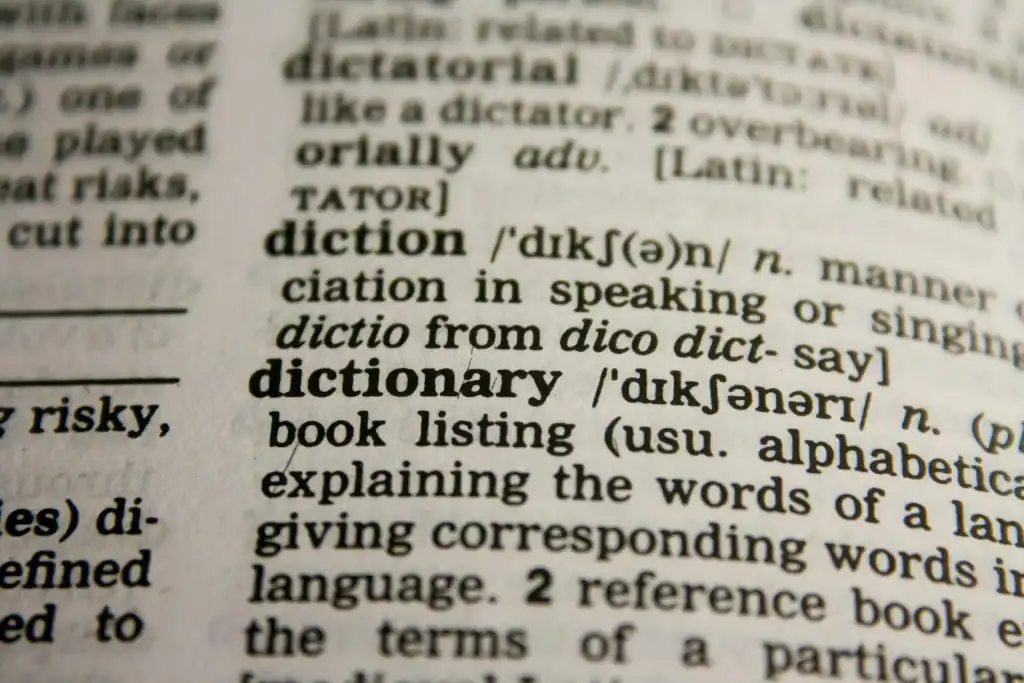I can still picture my first Monday morning in Santo Domingo. A sluggish ceiling fan thumped overhead while I argued with myself about quiero, quería, and querré. The cashier behind the counter waited, amused but patient, as my verbs tripped over the timeline and landed in an incomprehensible pile right between us. Hours of flash-card grinding had armed me with nouns for every fruit in the mercado, yet when real life demanded tense precision, all that mango vocabulary wilted. If you have packed up your life and moved into a Spanish-speaking country, you have likely discovered the same truth: verb tenses, not vocabulary, shape whether people understand what you actually mean. This article is the guide I wish someone had handed me on that steamy morning—an honest, street-level walk through every major Spanish tense, sprinkled with examples, real-world scenarios, and strategies to make the knowledge stick so firmly that you forget English ever had helping verbs.
Why Verb Tenses Matter When You Live Abroad
Vocabulary supplies the what; verb tenses deliver the when, the how certain, and the why it matters right now. Picture the immigration office where the clerk asks whether you already submitted a document. If you answer entregaré instead of entregué, you have just promised to turn in papers you actually filed last week. In a rental negotiation, arreglaron tells your future landlord that repairs are complete, while arreglarán hints the broken water heater will stay broken until some undetermined mañana. Even friendships hinge on tense accuracy. Promise a neighbor te llamo mañana and she expects a real ring; mumble te llamaba mañana and you sound as if you meant to call back when landlines still ruled the earth. Mastery of tenses converts daily survival into genuine connection because the people around you can finally trust the timeline in your stories.
One Clock, Two Languages, Different Gears
English and Spanish measure time with the same clock; they simply attach meaning in different ways. English leans on helper verbs—have eaten, will be eating, would have eaten—while Spanish bakes nuance straight into verb endings and then layers on moods such as the subjunctive. You can think of every tense as a dedicated tool inside a tidy toolbox rather than a swamp of arbitrary endings. Choose the tool, twist it onto the verb stem, and the timeline clicks into place.
Living in the Present — El Presente
Spanish present tense covers much more ground than its English cousin. It describes habits (Trabajo desde casa cada lunes), actions unfolding right now (¿Qué haces?), near-future arrangements (Esta noche salimos al malecón), and even universal truths (El sol sale por el este). Regular verbs slot into predictable endings: -ar verbs form hablo, hablas, habla; -er verbs become como, comes, come; -ir verbs turn into vivo, vives, vive. The moment you slide into daily conversation you will notice four irregular celebrities—ser, estar, ir, and tener. They appear in everything from taxi negotiations to medical checkups, so give them top billing in your rehearsal routine.
Dividing the Past — Pretérito and Imperfecto
Spanish splits the past into two cameras that capture entirely different moods. The preterite lens freezes a completed action the same way a photo stops a tennis serve. Anoche comí mofongo sits in a neat time box, finished and done. Short adverbs such as ayer, de repente, and la semana pasada often hover nearby as subtitles clarifying the moment.
By contrast, the imperfect behaves more like a slow-moving documentary. It records habitual actions, background scenery, and mental states without announcing where the reel ends. When you say, Cuando vivía en México, iba al mercado cada sábado, you invite the listener to imagine a rhythm that beat week after week. Words like mientras, siempre, and frecuentemente frequently tag along, but the atmosphere itself tells your audience that everything relaxed into routine. One mental shortcut helps English speakers choose correctly: if you can glide in the phrase “used to” or “was/were -ing” in English without losing sense, Spanish almost certainly prefers the imperfect.
Bridging Past and Present — The Perfect Tenses
Sometimes you need a sentence that reaches backward but keeps one foot planted in the present. Enter the present perfect: He perdido mi pasaporte signals a past loss with a present impact, namely your inability to travel until you sort it out. Forming it is straightforward—the present tense of haber (he, has, ha, hemos, han) couples with a past participle such as hablado, comido, or vivido. Push the story deeper into the past and you arrive at the past perfect, which English speakers call the pluperfect. Cuando llegaste, ya había firmado el contrato nests one past event inside another, clarifying sequence so everybody knows the paperwork was complete before your friend even stepped through the door.
Predicting Tomorrow — Futuro Simple and Futuro Próximo
Spanish offers two flavors of future. The simple future feels official and often appears in news reports, legal language, or any conversation that demands crisp certainty. You keep the infinitive and bolt on endings such as -é, -ás, or -án, producing verbs like viajaré, enviarás, or venderán. It also doubles as a device for guessing the present: ¿Dónde estará Luis? wonders where Luis might be right now.
Everyday chats, however, lean on the near future. You pair the present tense of ir with a plus the infinitive—voy a, vas a, va a. The domino effect is immediate: Voy a llamar al plomero means the call takes place soon, perhaps right after you finish your coffee. In many parts of Latin America, this roundabout structure sounds more natural than the simple future for casual plans.
Imagining Hypotheticals — El Condicional
The conditional marries the infinitive with endings like -ía and suddenly your verbs tiptoe into the land of polite possibility: Comería más mangú si tuviera hambre or ¿Me podrías traer la cuenta? Beyond hypothetical worlds and softened requests, the conditional also reports speech that once pointed toward the future—Ana dijo que llegaría el viernes. If you enjoy diplomacy, the conditional is your velvet glove.
Dancing with Doubt — El Subjuntivo
No tense stirs fear in newcomers quite like the subjunctive mood, yet it behaves logically once you grasp its purpose. The present subjunctive arises inside clauses that express doubt, desire, or emotion when introduced by que. For instance, Espero que vengas mañana carries the hope but not the guarantee of your arrival. You form it by grabbing the first-person present, chopping off the final -o, and flipping to the opposite vowel endings: hable, comas, viva. Shift the time reference backward and the imperfect subjunctive steps in: Me alegró que vinieras a la fiesta. Dig even deeper into regret or speculation and perfect subjunctive forms emerge—Ojalá hubiéramos enviado la visa antes. While English usually hides these subtleties inside extra words, Spanish puts them on display through endings.
Highlighting Action — Progressive Forms and Commands
When you need to shine a spotlight on an action happening right now, couple estar with the gerund: estoy cocinando, estamos arreglando, estarán revisando. The formula bends easily across time by conjugating estar into past, future, or conditional, then letting the gerund remain steady. Imperative forms, meanwhile, give direct orders. Spanish changes shape depending on whether you speak to a friend, a stranger, or a group, and negative commands require a separate conjugation. To stay pleasant, many locals front-load por favor; por favor, hable más despacio softens the demand without undercutting urgency.
Building Fluency without Bullet Points
You might wonder how to internalize this architecture without drowning in verb charts. One powerful approach involves assigning tenses to real-life scenarios. If you spend Friday evening recounting yesterday’s beach mishap, commit to narrating everything in the preterite. When bedtime arrives, flip on your voice recorder and describe plans for tomorrow with near-future constructions. The next morning, listen while you brush your teeth and notice where you stumbled. Another trick is keeping a color-coded journal: perhaps blue ink for present tense reflections, red for preterite flashbacks, and green for imperfect memories. The simple act of switching pens creates visual road signs in your brain.
Shadowing also transforms passive listening into active muscle training. Choose a short clip from local radio or a popular telenovela, pause after every sentence, and repeat until your mouth imitates the native rhythm. Because Spanish verbs carry tense in their very bodies, you end up practicing meaning and pronunciation simultaneously. If you prefer reading, grab the transcript of a news broadcast; highlight each verb, and label the tense in the margin. Within a few sessions, your eyes will anticipate endings before they appear.
Sidestepping Common Pitfalls
Learners routinely confuse preterite and imperfect, mostly because English merges both ideas into the simple past. The preventive question is straightforward: “Is the action finished at a specific moment?” If yes, choose preterite. Accents create a second hazard. Termino (I finish) and terminó (he finished) differ only by a stroke, yet they belong to separate conversations. The third trap is ignoring the subjunctive even when context screams for it. Native speakers hear the omission the way English ears notice a dropped auxiliary. Finally, English habits tempt newcomers to overload the present perfect. In much of Latin America, simple past often sounds crisper than he + participle for events completed yesterday. Listening to locals will guide you toward whichever form rings natural in your region.
A Quick Reference Without Tables
If you need a mental checklist, imagine walking along a straight road. Present tense stands right under your feet. One step behind lies the imperfect stretching like old cobblestones marking routines, while the preterite drops singular milestones into that same section. Turn slightly right and you find the present perfect, a foot in the past but with its shadow stretching into now. Farther back, the past perfect underlines events that occurred even before those milestones. When you pivot forward, the near future pulls events within arm’s reach, and the simple future marks distant but certain appointments, sometimes doubling as a speculative telescope for the present. Off the main path sits the conditional, a grassy detour where polite hypotheses bloom. Hovering above everything, the subjunctive spins like a weather vane, indicating wishes, doubts, and emotional gusts wherever they appear. Keeping that mental landscape in view will prevent you from reaching for the wrong form when the conversation speeds up.
Wrapping Up and Moving On
Fluency grows when tense changes feel as effortless as flipping a light switch. Once you glide from pagaba to pagará without conscious effort, your landlord stops repeating himself, your doctor spends less time guessing your symptoms, and new friends quit switching to English because they trust your timeline. Bookmark this guide and revisit one tense each week; practice narrating yesterday in preterite, plan tomorrow in near future, and express your hopes with the present subjunctive. If you want more structured challenges, explore our deep dive on the Spanish subjunctive coming next Tuesday. Subscribe below to receive the printable verb reference sheet—without bullet points—in your inbox, and keep forging ahead toward the day you think, dream, and negotiate entirely in Spanish.
¡Nos vemos en el barrio!







